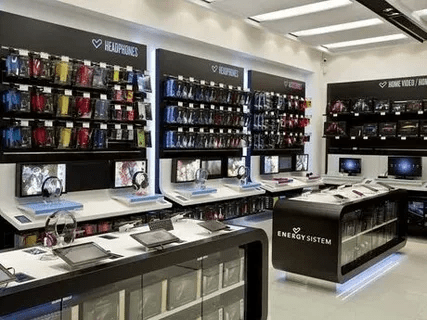As the e-commerce industry continues to expand, mobile app design commerce (m-commerce) is becoming increasingly dominant. More users are shopping via their smartphones and tablets than ever before. To maximize engagement and conversions, e-commerce websites must be optimized for mobile users. Here are some essential tips for designing an e-commerce site with mobile users in mind.
1. Implement a Mobile-First Design Approach
A mobile-first approach ensures that your site is designed primarily for mobile users before adapting to larger screens. This method prioritizes smaller screens, touch interactions, and performance efficiency. Mobile-first design improves usability and helps in creating a seamless shopping experience across all devices.
2. Use a Responsive Web Design (RWD)
Responsive web design ensures that your e-commerce site adapts to different screen sizes and resolutions. Using flexible grids, fluid images, and media queries, RWD allows for optimal viewing on various devices. A responsive design eliminates the need for a separate mobile site, reducing maintenance costs and improving SEO.
3. Optimize Page Load Speed
Speed is crucial for mobile shopping experiences. Slow-loading pages increase bounce rates and reduce conversions. To improve page speed:
- Optimize images by compressing them without losing quality.
- Use a content delivery network (CDN) to distribute site content efficiently.
- Minimize HTTP requests and enable browser caching.
- Implement lazy loading for images and videos.
- Use accelerated mobile pages (AMP) where applicable.
4. Simplify Navigation
Mobile users need a straightforward and intuitive navigation system. Here are a few key tips:
- Use a sticky navigation bar for easy access to important sections.
- Implement a collapsible hamburger menu to save space.
- Use clear and concise labels for menu items.
- Allow users to return to the homepage with a single tap.
5. Optimize the Checkout Process
A complicated checkout process leads to cart abandonment. Optimize your checkout process for mobile users by:
- Offering guest checkout options to avoid unnecessary registrations.
- Reducing the number of form fields to simplify the process.
- Enabling auto-fill and predictive text to speed up input.
- Providing multiple payment options, including mobile wallets like Apple Pay, Google Pay, and PayPal.
- Displaying progress indicators to inform users about their checkout status.
6. Utilize Mobile-Friendly Forms
Forms are crucial for registrations, checkouts, and feedback. To make forms mobile-friendly:
- Use large, easy-to-tap form fields.
- Implement dropdowns, radio buttons, and checkboxes instead of requiring manual text entry.
- Ensure clear error messages and real-time validation to prevent form submission failures.
- Enable autofill and address lookup for faster input.
7. Enhance Mobile Search and Filtering
Mobile users often rely on search functionality to find products quickly. To optimize search and filtering:
- Use a predictive search with autocomplete suggestions.
- Allow users to filter results by category, price, and other attributes.
- Make search accessible with a fixed search bar or a prominently placed search icon.
- Provide voice search capabilities for a hands experience.
8. Use Large, Clickable Elements
Since mobile users navigate with their fingers, clickable elements like buttons and links should be large enough to tap without errors. Ensure:
- Buttons are at least 44×44 pixels for easy tapping.
- Adequate spacing between clickable elements to avoid accidental taps.
- Clearly labeled call-to-action (CTA) buttons that stand out.
9. Implement Thumb-Friendly Design
Most mobile users hold their devices with one hand and use their thumbs to navigate. Ensure your design supports thumb-friendly interaction by:
- Placing essential elements (e.g., menus, CTAs) within easy reach of the thumb.
- Keeping frequently used controls at the bottom of the screen.
- Avoiding small text or links that require precise tapping.
10. Ensure Secure Mobile Transactions
Security is a top priority for mobile shoppers. To build trust and protect users:
- Use SSL encryption for all transactions.
- Implement two-factor authentication for added security.
- Clearly display security badges and trust signals.
- Regularly update security protocols to prevent breaches.
11. Enable Push Notifications for Engagement
Push notifications are an effective way to keep mobile users engaged. Use them to:
- Notify customers about discounts, promotions, and restocked products.
- Send personalized recommendations based on browsing history.
- Remind users about abandoned carts to encourage conversions.
12. Test Your Mobile Site Regularly
Mobile optimization is an ongoing process. Regularly test your site on various devices and browsers to identify issues and improve user experience. Use tools like:
- Google’s Mobile-Friendly Test to check responsiveness.
- Google PageSpeed Insights to analyze load speed.
- Heatmaps and session recordings to track user behavior.
Conclusion
Designing an e-commerce site with mobile users in mind is no longer optional—it’s essential. By focusing on mobile-first design, optimizing speed and navigation, simplifying checkout, and ensuring security, you can create a seamless shopping experience that drives conversions. Stay ahead of the competition by continually testing and improving your mobile e-commerce strategy to meet evolving user expectations.









































































































































































































































































































































































































































































































































































































































































































































































































































































































































































































































